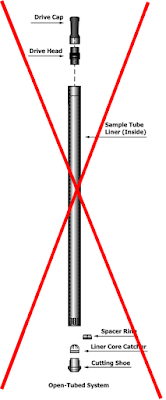O Poço de monitoramento é a melhor maneira de caracterizar uma área?
O estudo de áreas contaminadas no Brasil tem alguns "dogmas" que precisam ser revistos.
Um deles diz respeito ao poço de monitoramento: há algum tempo ele é considerado não a melhor, mas a única forma de se caracterizar uma área. Os diagnósticos e Modelos Conceituais são elaborados quase sempre apoiados em dados que são obtidos durante a sondagem para a instalação do poço de monitoramento e, posteriormente, do próprio poço.
Um debate muito interessante está ocorrendo no Linkedin sobre isso. Para quem participa do Grupo "Groundwater Remediation Search and Destroy Methodologies", vale a pena ler na íntegra .http://www.linkedin.com/groupItem?view=&srchtype=discussedNews&gid=2621693&item=251986034&type=member&trk=eml-anet_dig-b_pd-ttl-cn&fromEmail=&ut=02QAL8Jojv_5M1
Para quem não participa, transcrevo abaixo as participações que achei mais interessantes. Boa leitura:
Are monitoring wells the best way to characterize a site and then gauge remediation performance and the overall risks posed by the site?
The same question could be asked about current approaches for soils and soil gas?
Eliot
Eliot



I would also add that UV-based detectors (FFD and uvost) can be highly effective in delineating diesel and fuel oil releases without the costly installation and monitoring of wells.
EPA has sponsored a few workshops and webinars on what has been referred to as the "single mobilization solution". An example of this would be where MIP could be used for solute plume deliniation, the high resolution piezocone (HRP) is then deployed to characterize the site specific hydraulics (e.g., K field, head field, gradient, velocity and flux, etc.) and specify monitoring well design parameters (e.g., filter pack and slot size), then custom designed monitoring wells (using the Kram/Farrar relationships) can be installed in appropriate locations for long term trend analyses. A variation on this could be where sensors are deployed in these wells following installation to allow for automated reporting of trends related to remediation. All of this can be implemented in a single mobilization/phase with the same talented field crew.
An approach like this has many benefits, and could be useful regardless of remediation approach employed (MNA or something more aggressive). When this type of approach is employed (e.g., coupling field analytical methods with monitoring network design), practitioners should have more confidence in the use of monitoring wells for remediation perfomance assessment
Add up all the costs and the fact that no contamination has been found and this should be a good case for why wells are not the way to characterize or monitor most if not all sites located in anything less that 10-5 cm/sec soils.
Lynn
Also used dissipation testing for approximation of hydraulic permability, immediately reviewed logs and collected discrete depth GW samples at locations of lower perms or potential aquitards using the CPT. Analyzed soil and GW samples onsite using GC and GC/MS system. It worked quite well, saved months and many $ for clients.
I hope we see a real movement to use these tools, and the new systems you have been talking about must be a big technical improvment! Can anyone explain why we have not used the tools and techniques we have had for several decades?
But to the topic at hand, I also have spent many years understanding (or trying to anyway) how best to collect GW samples. GW is one of the three media that is regulated and factors directly into risk assement and drives remediation, it is critical that we collect and analyze as accurately as possible. My experience suggests that we collect too broad of a vertical interval, even a 5 or 10 foot screen probably eclipes the vertical interval of contamination. What I have seen is the composit GW sample from high concentration interval diluted with lesser or low concetration above and/or below. I theorize this may play into inconsistant GW data. Even the the old CPT data indicated this occurence of short vertical intervals of contamination.
I have been an advocate for discrete interval GW products like the Waterloo or Westbay sampler but low cost pvc wells win out. I have studied the low flow sampling process and not convinced it is worth the time and results for more accurate GW analysis. But that another item for discussion. Interested in hearing who is using what technologies!
2With respect to using piezocones for hydraulic assessment, the "new" high-resolution piezocone (also developed by the Navy during those years, and recently commercialized) affords the ability to quantify K for even coarse grained soils. Imagine how one can improve predictive models and remediation designs, and determine flux/discharge with such a tool. Now we can because the technology is finally available to the private sector!
With respect to short screened wells versus traditional long screened wells, my colleagues and I have performed comprehensive tests that confirm what Bob has stated. One must consider, however, that if the screens are too short, and are not placed in the zones of highest concentration or K, conclusions regarding plume status and remediation progress will be considerably impacted. This again cries out for the use of high-resolution approaches (e.g., MIP, LIF, HRP, etc.) BEFORE committing to well design and installation locations.
- • Responder em sigilo
- • Marcar como inadequado
2